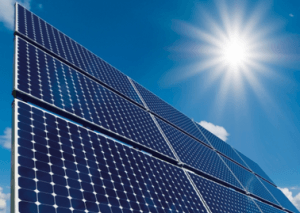Governments urged to make stronger commitments towards renewable energy
 The International Energy Agency’s (IEA) World Energy Outlook 2021 has urged governments to make stronger commitments towards the promotion of renewable energy.
The International Energy Agency’s (IEA) World Energy Outlook 2021 has urged governments to make stronger commitments towards the promotion of renewable energy.
The Outlook was released on Wednesday ahead of the 2021 United Nations Climate Change Conference (COP26) Summit, scheduled to take place in Glasgow, Scotland.
The report, which was made available to the Ghana News Agency, indicated that investment in renewable energy would need to be tripled by 2030 if the world’s climate pledges were to be met and worried the world was not investing enough to meet its future energy needs.
It noted that in 2020, even while economies bent under the weight of COVID-19 lockdowns, renewable sources of energy such as wind and solar PV continued to grow rapidly with electric vehicles setting new sales records, saying, the new energy economy would be more electrified, efficient, interconnected and clean.
“Its emergence is the product of a virtuous circle of policy action and technology innovation, and its momentum is now sustained by lower costs.
“In most markets, solar photovoltaic (PV) or wind now represents the cheapest available source of new electricity generation,” the report said.
It said clean energy technology was becoming a major new area for investment and employment – and a dynamic arena for international collaboration and competition and that pressures on the energy system were not going to relent in the coming decades.
The report said the energy sector was responsible for almost three-quarters of the emissions that had already pushed global average temperatures 1.1°C higher since the pre-industrial age, with visible impacts on weather and climate extremes.
It said the energy sector had to be at the heart of the solution to climate change.
“At the same time, modern energy is inseparable from the livelihoods and aspirations of a global population that is set to grow by some two billion people to 2050, with rising incomes pushing up demand for energy services, and many developing economies navigating what has historically been an energy- and emissions-intensive period of urbanisation and industrialisation,” the report said.
“Today’s energy system is not capable of meeting these challenges; a low emissions revolution is long overdue.”
This special edition of the World Energy Outlook was designed to assist decision makers at the 26th Conference of the Parties (COP26) and beyond by describing the key decision points that could move the energy sector onto safer ground.
It provides a detailed stocktake of how far countries had come in their clean energy transitions, how far they still have to go to reach the 1.5°C goal, and the actions that governments and others can take to
seize opportunities and avoid pitfalls along the way.
With multiple scenarios and case studies, the World Energy Outlook explains what was at stake, at a time when informed debate on energy and climate was more important than ever.
The report said in the run-up to COP26, many countries had put new commitments on the table, detailing their contributions to the global effort to reach climate goals; more than 50 countries, as well as the entire European Union, had pledged to meet net zero emissions targets.
“If these are implemented in time and in full as modelled in detail in our new Announced Pledges Scenario (APS), they will start to bend the global emissions curve down.”
Source: GNA
